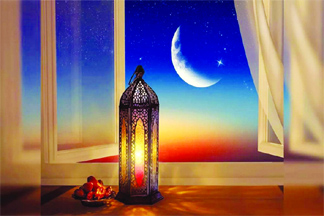
Eid al-Fitr, also known as the “Festival of Breaking the Fast,” is one of the most significant celebrations in Islam. It marks the end of Ramadan, a sacred month of fasting, prayer, and reflection for Muslims worldwide. The festival is a time of joy, gratitude, and communal harmony. In 2025, Eid al-Fitr is expected to be observed on March 31, subject to the sighting of the crescent moon, which signifies the beginning of Shawwal, the tenth month of the Islamic calendar.
The Significance of Eid al-Fitr
Eid al-Fitr holds profound spiritual and social importance. It serves as a moment of thanksgiving to Allah for granting believers the strength and patience to complete Ramadan. The festival also emphasizes unity, charity, and the bonds of family and friendship.
The core principles that define Eid al-Fitr include:
– Spiritual Renewal: Muslims express gratitude to Allah for the completion of Ramadan and seek His continued guidance.
– Charitable Giving: Acts of charity, including Zakat al-Fitr, ensure that the underprivileged can also partake in the celebrations.
– Social Harmony: Eid fosters a sense of unity and reconciliation within families, communities, and even among different cultures.
Determining the Date of Eid al-Fitr
Islam follows the lunar calendar, meaning Islamic months are based on the cycles of the moon. Since a lunar year is approximately 10-12 days shorter than the solar Gregorian year, the dates of Islamic holidays shift each year.
The sighting of the crescent moon on the 29th night of Ramadan determines whether Eid will be celebrated the following day or if fasting continues for one more day. In 2025, if the moon is sighted on March 29, Eid will be observed on March 30. Otherwise, it will fall on March 31, after a full 30 days of fasting.
Historical Origins of Eid al-Fitr
Eid al-Fitr has its roots in the early days of Islam. According to Islamic tradition, the Prophet Muhammad (peace be upon him) instituted this festival in the second year of Hijrah (622 CE) after receiving divine revelations regarding Ramadan.
Historical accounts suggest that before Islam, pre-Islamic Arab societies celebrated different festivities, but Eid al-Fitr was introduced as a religiously sanctioned holiday, emphasizing gratitude and communal worship. The Prophet encouraged Muslims to celebrate Eid with prayers, feasts, and acts of kindness, shaping the traditions that continue today.
Rituals and Traditions of Eid al-Fitr
Eid al-Fitr is marked by a series of rituals and traditions that begin even before the day itself.
1. Zakat al-Fitr (Charitable Giving)
Before performing the Eid prayer, Muslims are required to give Zakat al-Fitr, a form of charity aimed at helping the less fortunate. This obligatory act ensures that everyone, including the poor, can participate in the festivities. The donation typically consists of staple food items such as rice, wheat, or dates, or an equivalent monetary contribution.
2. Eid Prayer (Salat al-Eid)
On the morning of Eid, Muslims gather in mosques or open prayer grounds to perform the special Eid prayer. This prayer consists of two units (rak’ahs) and is often accompanied by a sermon (khutbah) emphasizing gratitude, forgiveness, and communal unity.
3. Festive Attire and Personal Grooming
It is customary to wear new or freshly cleaned clothes on Eid. Men often apply perfume, while women may adorn themselves with henna. Wearing the best attire symbolizes renewal and respect for the occasion.
4. Greeting and Embracing Loved Ones
The exchange of greetings such as “Eid Mubarak” (Blessed Eid) is an integral part of the celebrations. Families and friends visit one another, sharing hugs, gifts, and well-wishes.
5. Feasting and Special Foods
Eid is synonymous with feasting. Special dishes vary across cultures but commonly include:
– Sheer Khurma (India, Pakistan, Bangladesh): A sweet vermicelli and milk-based dessert.
– Maamoul (Middle East): Date-filled pastries enjoyed with tea.
– Ketupat (Indonesia, Malaysia): Rice cakes wrapped in palm leaves.
6. Gifts and Eidi
Children eagerly anticipate Eidi, cash gifts given by elders as a token of love and blessing. Gift-giving extends beyond family, fostering a sense of generosity.
7. Acts of Kindness and Community Service
Many Muslims use Eid as an opportunity to visit orphanages, hospitals, or participate in food distribution drives, reinforcing the Islamic values of compassion and charity.
Global Celebrations
While the essence of Eid remains the same worldwide, cultural diversity shapes the way it is celebrated.
Middle East
In Saudi Arabia and the UAE, Eid begins with grand prayers in mosques, followed by extravagant feasts and public festivities. Fireworks and carnivals add to the joy, and traditional sword dances are performed in some regions.
South Asia
In India, Pakistan, and Bangladesh, vibrant bazaars fill up with shoppers ahead of Eid. Women apply intricate henna designs, and families gather for large meals. Traditional sweets like seviyan (sweet vermicelli) are widely enjoyed.
Southeast Asia
In Malaysia and Indonesia, Eid (Hari Raya Aidilfitri) is marked by open houses where families welcome guests with delicacies like rendang (spiced meat dish) and lemang (glutinous rice cooked in bamboo).
Western Countries
In the US, UK, and Canada, Muslims attend communal prayers and often organize interfaith events. Public festivals include halal food stalls, cultural performances, and carnival rides.
The Modern Evolution of Eid
With advancements in technology and social media, Eid celebrations have evolved. Virtual gatherings allow distant families to connect, and online gifting has become popular. However, the core values of gratitude, charity, and community remain unchanged.





Be the first to comment